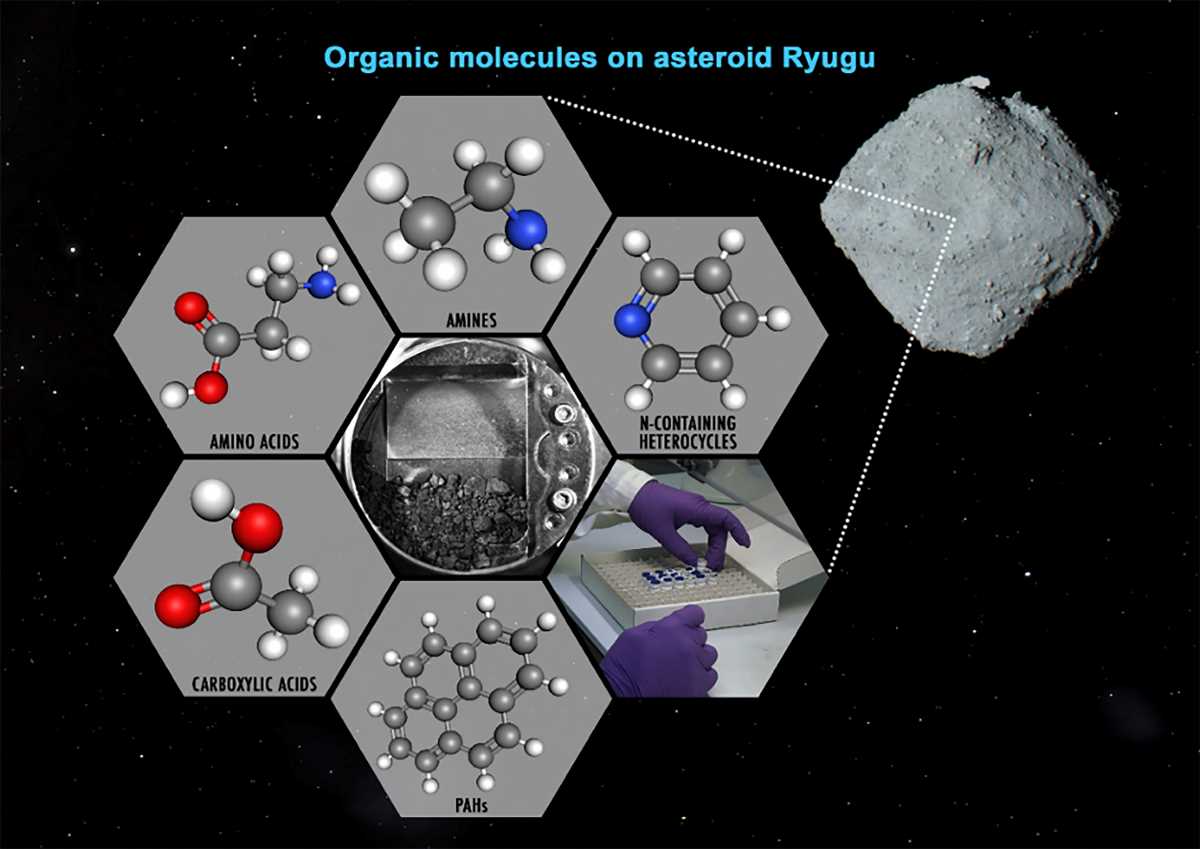How Asteroid Ryugu Shakes Up Theories on Life's Origins
The enigmatic quest to decode life's origins has taken a monumental leap with the discovery of uracil—a key building block for life—in asteroid Ryugu. Extracted by the Hayabusa 2 spacecraft, this 4.5-billion-year-old sample is the purest, ancient extraterrestrial matter ever examined.

The enigmatic quest to decode the origins of life has always oscillated between the celestial and the terrestrial, the empirical and the spiritual. From Creationist dogmas that explain life as an act of divine providence to scientific theories like Oparin's primordial soup and Miller's groundbreaking experiments, the explanations have been manifold.
Among these intellectual discourses, the hypothesis of Panspermia has captivated imaginations since the late 19th century. The theory, radical in its implications, posits that the primordial elements for life may have been extraterrestrial, arriving at Earth via meteorites carrying microbial life or spores, and flourishing in the nascent oceans of our planet.
The recent discovery by Japanese scientists offers a tantalizing validation of the Panspermia hypothesis. A study published on March 21 reveals the identification of uracil—a crucial building block for life—in samples extracted from asteroid Ryugu. Situated approximately 100,000 kilometers from Earth and with a diameter of about 900 meters, Ryugu is an interplanetary artifact nearly as ancient as the solar system itself. Its age of about 4.5 billion years offers us a pristine glimpse into cosmic history.
A Milestone in Space Exploration and Astrobiology
This groundbreaking finding gains unparalleled significance for several reasons. First, the sample from Ryugu is untainted, unlike previous samples from meteorites that had made terrestrial landfall and were vulnerable to contamination from Earth's biosphere.
The 5.4-gram sample, collected by the Hayabusa 2 spacecraft through a controlled explosion, is considered the most uncontaminated, ancient extraterrestrial matter ever examined. Launched in December 2014, Hayabusa 2's capsule carrying these samples landed in southern Australia six years later, enabling scientists to engage in one of the most groundbreaking analyses in astrobiology.
Researchers Patricia Núñez and Roberto Vázquez Meza from the Astrobiology Laboratory of the UNAM underline the significance of the find. Vázquez Meza reflects on the superior validity of these new samples, saying, “Other types of organic molecules had already been found in meteorites; however, there were always doubts because they were bodies found many years after having fallen to Earth.”
So what does the discovery of uracil, a nitrogenous base essential for life, signify? Uracil is an integral component of RNA (Ribonucleic Acid), which itself is a cornerstone in the biochemical architecture of all living cells. Patricia Núñez eloquently states, “It is something significant that adds to all the little puzzles we have gradually discovered to understand the origin of life on Earth, and how we could find life on other planets as well.”
Intriguingly, the sample harvested from the interior of the asteroid contained more organic material than that from the surface. This hints at the possibility that a part of Earth's DNA—or, to be precise, its RNA—may have a cosmic lineage, born from complex molecules in the universe that predate our planet.

A Broader Perspective on Galactic Life
The implications of this discovery transcend the boundaries of our planet and stretch the realm of possibility for life elsewhere. Núñez adds, “These asteroids are floating in space, they reach another place, another planet that has conditions similar to those of Earth; there is a greater probability that there is another planet with life very similar to ours.” The chemistry of life, as we understand it, may be universal, penned in the cosmic ink of nitrogenous bases and amino acids.
Roberto Vázquez Meza's thoughts provide a contextual epilogue, stating that we now know of more than 5,000 planets orbiting other stars—discovered only in the past three decades. With the sheer number of stars, each potentially surrounded by planets rich in complex elements, the “recipe” for life could be a galactic norm, rather than an Earthly exception. “I do believe that there must be life outside Earth and this type of result (the uracil found in Ryugu) supports that, of course,” Vázquez Meza concludes.
The uracil in Ryugu is not just another organic molecule; it is a cosmic herald, portending a universe brimming with the potential for life. It serves as a potent reminder that the roots of our existence may not be confined to the dusty plains and blue oceans of Earth, but could stretch across the stars, woven into the very fabric of the universe. With each discovery like this, the line between Earthly life and cosmic possibilities becomes increasingly porous. We're not just looking at a molecule; we're glimpsing a universal biological narrative, written long before Earth spun its first day.




